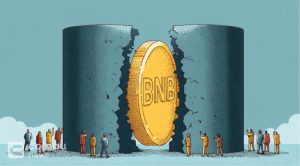The Optimism ecosystem is one of the most prominent Layer 2 that help improve scalability and overcome some limitations for Ethereum. Layer 2 is constantly evolving even when the market is struggling. Still, in trend, Optimism is also about to be upgraded with the Bedrock update. It helps Optimism get back on track after the first Airdrop for users and the launch of Incentive packages for the ecosystem.
What is Bedrock?

On 04/02/2023, Optimism announced that it has completed testing on the Optimism Goerli Testnet. And sent an upgrade proposal for the Optimism Mainnet network to Token House. This proposal will officially open on February 15, 2023, and then OP Token holders can participate in voting. But until February 17, 2023, the project suddenly announced to postpone the upgrade schedule from March to April to fix some errors.
Bedrock is a technical upgrade on Optimism, making it more compatible with Ethereum and reducing the amount of code in the OP Stack. This is really necessary to attract developers to Optimism, and they are the primary agents that help promote the development of the ecosystem.
After the proposal is approved, Optimism will implement the upgrade in the next weeks when it is ready in all aspects. To ensure the upgrade is taking place smoothly and safely.
Summary of improvements
Bedrock improves on its predecessor by reducing transaction fees by using optimized mass compression and Ethereum as the inbuilt data layer; shortening the delay in including L1 transactions in aggregations by handling L1 reorganizations more dynamically; enabling modular proof systems through code reuse; and improving node performance by eliminating technical debt.
Lower fees

In order to reduce data expenses, Bedrock also employs an efficient data compression approach. Although we are still evaluating this change’s effects, we anticipate that it will result in a significant fee reduction.
Bedrock also eliminates all gas overhead associated with EVM execution when sending data to L1. This reduces fees by an additional 10% compared to the previous version of the protocol.
Shorter deposit time
Bedrock introduces L1 reorganization support in the node software, significantly reducing users’ time to wait for deposits. Previous protocol versions could take up to 10 minutes to confirm a deposit. With Bedrock, we expect promises to be confirmed within 3 minutes.
Improved proof module
Bedrock abstracts the proof system from the OP Stack so that the total can use either a bug proof or a valid proof (e.g., zk-SNARK) to demonstrate the correct execution of the inputs in the calculation. This abstraction allows systems like Cannon (opens a new window) to be used to indicate errors in the system.
Improved button performance
Node software performance has been significantly improved by allowing several transactions to be executed in a single total “block” as opposed to the previous “one transaction per block” model in the last version. This allows spreading the cost of updating the Merkle trie across multiple transactions. Given current transaction volumes, this reduces the state’s growth by about 15GB/year.
By eradicating technological debt from the previous protocol version, node performance is substantially enhanced. The necessity for a separate “data transport layer” node to index L1 will be eliminated, and the node software will be updated to allow for quick queries of transaction data from L1.
Ethereum Equivalent Improvement
Bedrock was designed from the ground up to be as close to Ethereum as possible. Many deviations from Ethereum in the previous version of the protocol have been removed, including:
- Model one transaction per block.
- Custom code to get L1 block info.
- Separate L1/L2 charge fields in JSON-RPC API.
- A custom ERC20 representation of the ETH balance.
- Bedrock also adds support for EIP-1559, chain reorganization, and other Ethereum features available on L1.
Design principles
Bedrock is built to be modular & upgradable, to reuse existing code from Ethereum, and be as close to 100% Ethereum equivalent as possible.
Modularity
Bedrock makes it easy to swap out different components in the OP Stack and add new capabilities using well-defined interfaces and versioning schemes. This allows for a flexible architecture that can adapt to the future evolution of the Ethereum ecosystem.
Code reuse
Bedrock uses existing Ethereum architecture and infrastructure as much as possible. This approach allows OP Stack to inherit security and “lindy” benefits from battle-tested codebases used in production on the Ethereum Mainnet.
Equivalent of Ethereum
Bedrock is designed for maximum compatibility with existing Ethereum developer experiences. A few exceptions exist due to the fundamental difference between L1 and rollup: changed fee model, faster block times (2 seconds vs. 12 seconds), and special transaction type to include L1 deposit transactions.
Why are these important?

Because Bedrock is the foundation that makes Optimism the first truly Decentralized EVM Compilation, for a compilation to be genuinely secure and decentralized, it needs to have a proof-of-concept (error proof or sometimes “fraud-proof”) mechanism that can be updated without long delays without delay no need for any upgrade key.
This is the sad truth of the rollup: if you upgrade fast and have proof of failure, your blockchain security still depends on your upgrade keys. You can only have true total-level security once that’s fixed.
Currently, there is only one way to solve this problem once and for all: diversity of customers and variety of evidence. Just as Ethereum needs customer diversity (Geth, Erigon, OE, Nethermind, etc.), rollup needs customer diversity. With customer diversity, a bug becomes a chain split and can be resolved. And without the variety of customers, a vulnerability has the potential to become a serious security incident. Therefore, this is a deliberate decision to diversify the aggregate customers.
Besides, Bedrock is highly flexible and modular, and our L2-derived pipeline and error-proof architecture mean that new layers of available data can be easily implemented and integrated into Bedrock. That’s why OP Labs is working hard to help deliver EIP-4844 (“proto-dank sharding”). After Ethereum provides EIP-4844, Optimism can switch to the “data blobs” transaction type seamlessly, and users can save a lot of gas fees. And, Bedrock is flexible. It’s a Rollup client, not an optimistic Rollup client.
Optimism is preparing for the future, and Bedrock is the foundation of that future. It’s not a matter of building the best Optimism or ZK Compilation, but building the Best Compilation.
Competitors

The competitor with the closest product range to Optimism is Arbitrum, when both are currently oriented towards the Optimism Rollups (OR) model. Arbitrum also recently deployed a testnet for the upgraded version of Nitro. This move is also expected to bring more processing power to the current Arbitrum One.
However, according to the information gathered, it seems that these two OR projects are looking to implement the ZK security mechanism. Typically, with the Bedrock move, Optmism will have the ability to integrate Zero-Knowledge technology later. Smartcontract account (researcher at OPLab) said that Bedrock is currently using the authentication mechanism of Optimistic technology (with the name Cannon), but this mechanism is completely flexible with the Bedrock platform, helping to change to ZK form if necessary.
DISCLAIMER: The Information on this website is provided as general market commentary and does not constitute investment advice. We encourage you to do your own research before investing.
Join us to keep track of news: https://linktr.ee/coincu
Foxy
Coincu News






















